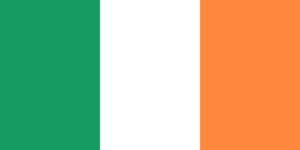What To Expect
Ireland is a world-famous country known for its many pubs, spectacular scenery, coastal landscapes, medieval castles, and friendly locals. Many people only visit the main cities of the country, but the best way to experience the Emerald Isle is actually by renting a car and exploring the whole island.
Of course, most people’s first stop is the capital city, Dublin. It offers many things to see and do such as the famous Temple Bar, Dublin Castle, Trinity College, and Guinness Storehouse. Some other notable cities also include Galway, Cork, Kilkenny, Killarney, Cobh, Londonderry, and Limerick.
However, much of Ireland’s charm comes from its stunning landscapes and scenery, the most famous of which being the Cliffs of Moher. The island is also full of scenic drives like the Ring of Kerry as well as medieval castles like Blarney Castle, Bunratty Castle, and Ashford Castle, to name a few.
In addition, although Northern Ireland is actually a part of the UK, many people combine their trip to Ireland with a visit there as well. Belfast is a lovely city which is home to the Titanic Museum and other notable sights. And this is also where you’ll find the Giant’s Causeway which is a very popular attraction for travelers to the island.
All in all, Ireland has a lot to explore and is well worth a visit!
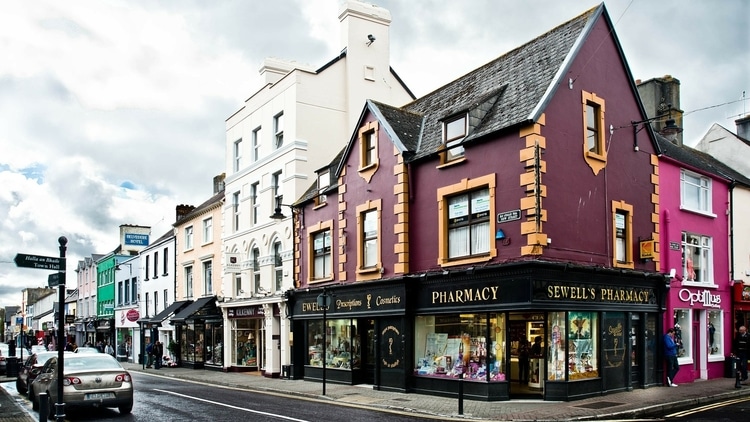
Citizens of most developed countries can enter Ireland visa-free for up to 3 months. If you are not a citizen of a visa-exempt country, you must go to the nearest Irish embassy and apply for a Tourist Visa to be granted entry.
There are no health risks in Ireland requiring any specific travel vaccinations for normal travelers. Make sure you are up to date on your standard vaccinations and consult a health professional for further advice.
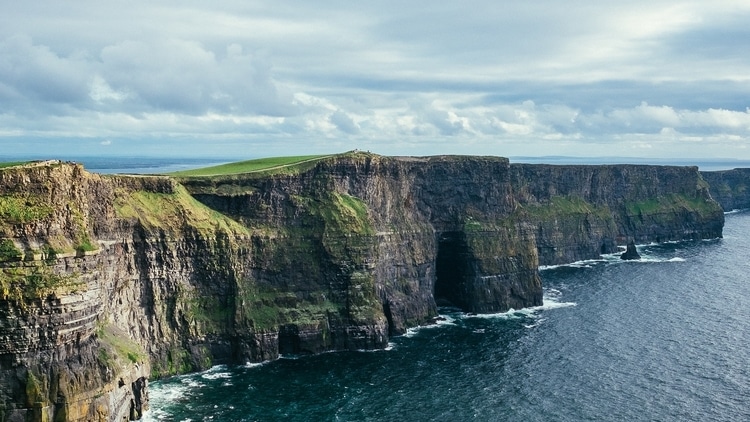
Key Information
Population: 5 Million
Capital City: Dublin
Languages Spoken: English + Irish
Currency: Euro (EUR/€)
State Railway: Irish Rail
Driving Side: Left
Largest Airports:
1. Dublin (DUB)
2. Cork (ORK)
3. Shannon (SNN)
4. Connaught (NOC) – Ireland West Knock
5. Kerry (KIR)
Best Time To Visit
Ireland has similar weather to the UK with lots of rain and unpredictability, especially in the winter. However, summers are typically quite pleasant and although spring and autumn are not as warm, they can still be quite nice.
The best time to visit Ireland is right before and after its summer rush (May & September) when you aren’t surrounded by a million other tourists and the weather is still pleasant. Your transportation & accommodation will also be cheaper and you won’t have to wait in long line-ups when visiting some of the main attractions.
However, June – August is the most popular time to visit because that’s when the weather will be at its best. If you do plan to travel in the summer, make sure to book your transportation and accommodation in advance as it’s the busiest time of the year in Ireland!
High Season: June – August
Low Season: November – March
Top 5 Destinations

Dublin

Cliffs of Moher

Kilkenny
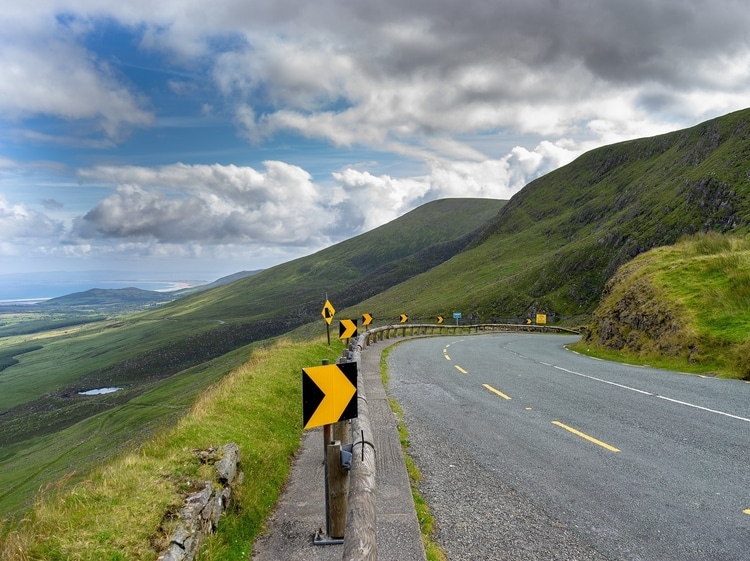
Ring of Kerry

Blarney Castle
Currency Information
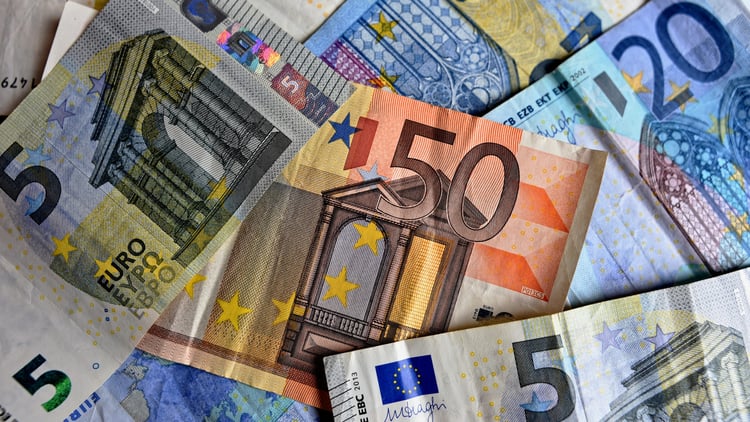
The currency used in Ireland is the Euro (EUR/€). The notes come in denominations of 5€, 10€, 20€, 50€, & 100€.
The Euro is further divided into 100 euro cents (c). The coins come in denominations of 1c, 2c, 5c, 10c, 20c, 50c, 1€, & 2€.
Use the currency converter below to determine the latest exchange rate.
Tipping Guide
Tipping is not customary in Ireland, but it is appreciated. If you wish to tip for good service, here are some guidelines to follow:
Hotel Bellhops: 1-2€ per bag
Hotel Housekeepers: not expected
Restaurant Servers: 10% of the total bill
Cafés & Baristas: round up to the nearest whole number
Bartenders: round up to the nearest whole number
Taxi/Uber Driver: round up to the nearest whole number
Tour Guide: up to 10% of the total tour price on single-day tours and up to 5€ per day on multi-day tours
Note: try to tip in cash as service charges and tips left on card machines go straight to the owners.
Power Outlet Information
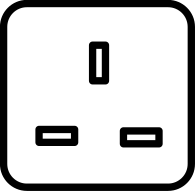
While the rest of Europe uses Type C as a standard for power outlets throughout the continent, Ireland uses the same outlet as the UK.
To be able to charge your electronic devices in Ireland, you need a Type G adapter.
Get your compatible Type G adapter here.
The voltage used in Ireland is 230V. Learn more about how this may affect your electronic devices in my Guide to the Top Travel Accessories.
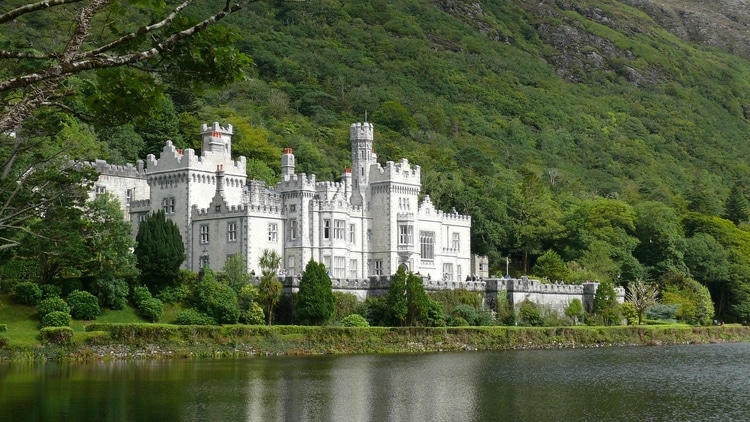
Cellphone Information
Ireland has average overall 4G LTE coverage and it can be spotty in rural areas. Make sure your phone is GSM-compatible with the 3G frequency and primary 4G LTE band used in the country to always have a connection.
Learn more about this in my Guide to Travel-Ready Phones.
Information about local prepaid SIM cards in Ireland
Calling Code: +353
Emergency Number: 112 (Police, Ambulance, & Fire)
3G Frequency Used: 2100
4G LTE Bands Used: 3 (primary) + 20

